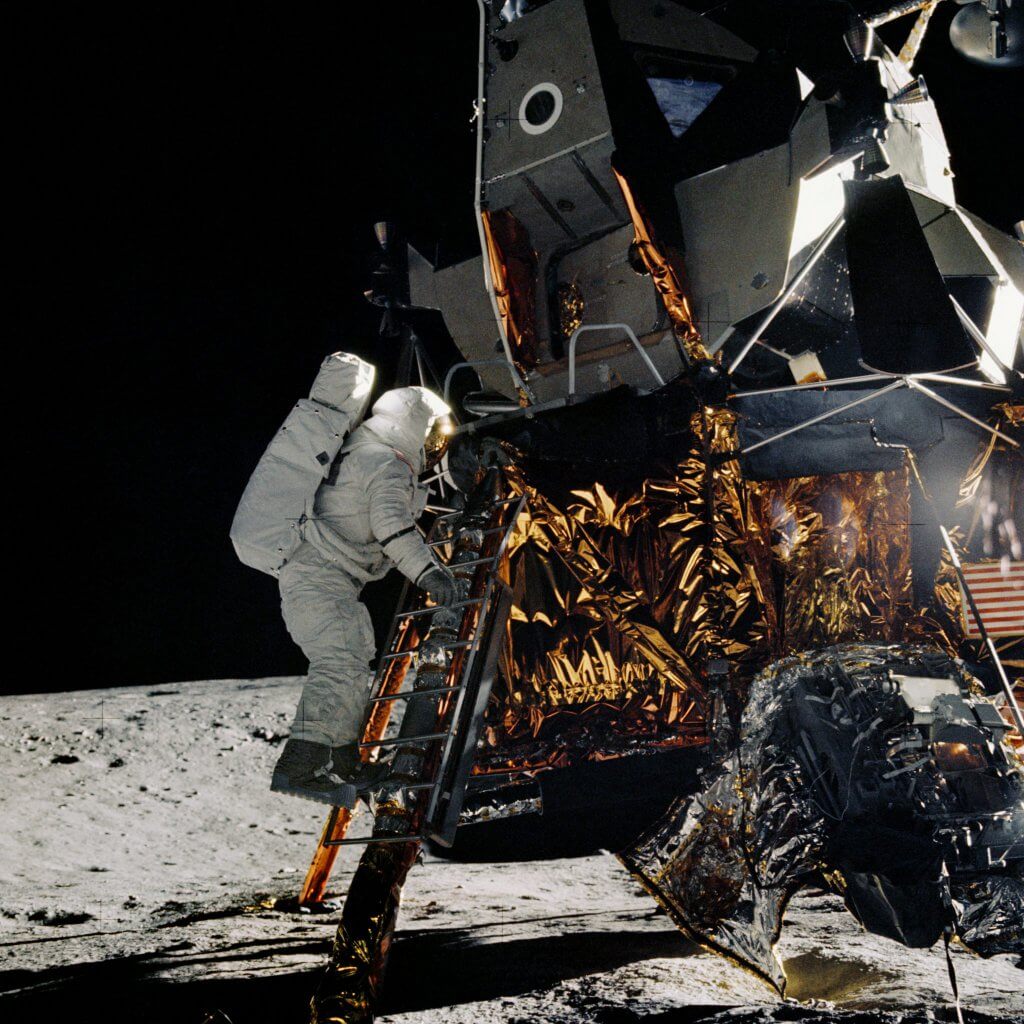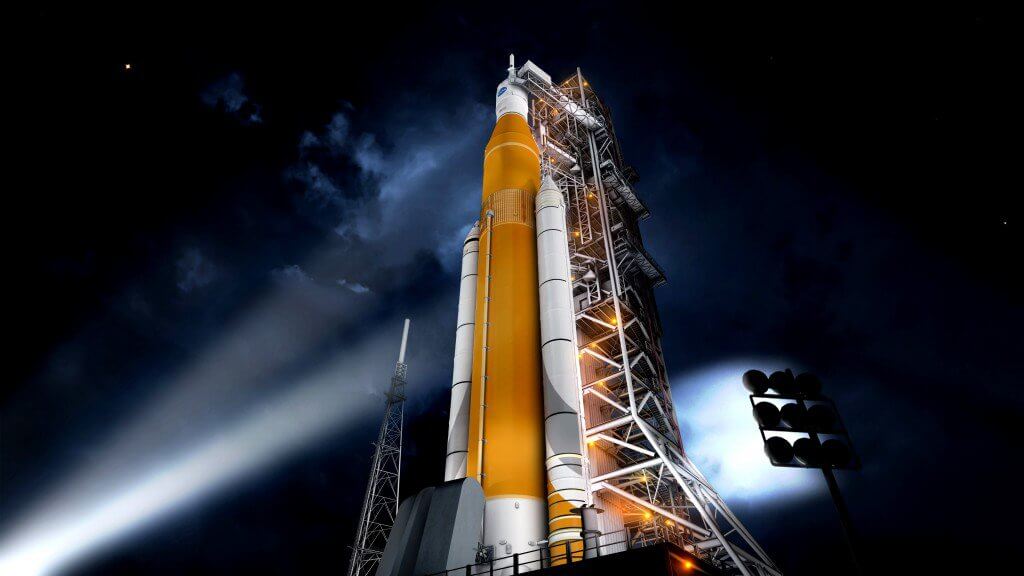The Trump Administration has signalled a change of space policy on a human return to the Moon. Addressing the National Space Council in Huntsville, Alabama, and hinting that the USA was in effect in a race with China, US Vice President Mike Pence called for a human astronaut return to the Moon by 2024 “by any means necessary”.
This is about four years earlier than NASA had originally planned via the construction of a multi-national orbiting lunar space station – the Lunar Gateway – and it provides a strong hint that NASA will use commercial space resources as well as its own. The Lunar Gateway’s construction will not begin until 2022.
In an earlier announcement, SpaceX and its competitor Blue Origin received a fillip from NASA Administrator Jim Bridenstine. He noted that NASA was actively looking at commercial alternatives to using the delayed Boeing-built SLS for the initial EM-1 unmanned test mission of the Orion crew spacecraft. It could use two commercial launch vehicles (e.g. SpaceX’s Falcon Heavy) to launch its Orion/service module and also a transfer stage so that they could be docked in LEO before a transfer to the Moon.
While most space experts believe that the timeline would be too short to allow for such a change – the flight is due to take place next year and, by the way, is still likely to make that with certain testing shortcuts – it is a sign that SLS could have a very short career and that NASA will, instead, commission commercial Heavy Lift launch vehicles (HLVs) for its heavy-lift transportation needs. NASA underlined this by, in effect, cancelling the development of larger versions of SLS after the initial Block I version. NASA’s latest budget request has suspended funding for the new Exploration Upper Stage (EUS) needed for the larger Block IB version of SLS. The agency is now actively rearranging the Lunar Gateway schedule to accommodate the use of commercial launch vehicles.
Comment by David Todd: While we are not sure that China actually views itself as being in a race to return humans to the Moon, the American public needs to become excited again by human space exploration. The new 2024 lunar landing plan just might manage this.
However, there are problems. NASA’s Lunar Gateway space station plan will be too slow to take humans back to the Moon by the 2024 target date. Our analysis is that the only way this new landing target can be achieved is if the SLS Block I is employed for some Apollo class early human return exploration missions using a two-launch architecture. These would entail either two SLS launches, or one using an SLS along with a commercial HLV to carry a transfer stage (probably the SLS’s ICPS) and lunar landing craft. The already flying Falcon Heavy is a candidate for this, although its payload looks a tad too small even with the ICPS, unless only a very small two-person lander is chosen.
Ending the further development of larger versions of SLS in favour of commercial HLVs – the SpaceX Superbooster or Blue Origin’s New Glenn/New Armstrong, which is now under development – is exactly what this column previously recommended. Nevertheless, in the meantime we suggest stretching the tanks of the human-rated Delta IV-based Interim Cryogenic Propulsion Stage (ICPS) of the SLS Block I. This relatively inexpensive modification could get SLS Block I TLI (Trans Lunar Injection) capability up from 27 metric tons to close to 35 metric tons – ideal for two-launch mission architecture using a decent sized lander. Even though it might eventually become just an interim HLV before larger commercial rockets arrive, SLS could yet allow some exciting human exploration missions to take place in the meantime.
By the way, NASA might be wise to wait a while before cancelling later versions of SLS altogether (under current proposals later versions will not be officially cancelled but will be “defunded”). NASA needs to make sure that the Starship/Super Booster and New Glenn/New Armstrong types are actually going to happen. The expensive, much delayed and now very much interim heavy-lift launch vehicle, SLS, still remains NASA’s long-range insurance policy.
The other problem that NASA has is that it is short of a lunar landing craft. The Apollo era’s Lunar Excursion Module (LEM) is an obsolescent and long retired museum piece. Meanwhile, Project Constellation’s Altair lander was cancelled a decade ago at the paper design stage. That said, NASA has already commissioned commercial companies to devise initial designs for unmanned and manned lunar landing craft. Funds will need to be released for such a craft to be developed and constructed in time – possibly delaying the Lunar Gateway station.
The final point to make is that NASA looks as if it is coming around to our recommendation that it should be the funding source for initial Mars human missions using SpaceX’s plan. We hope it does so.









